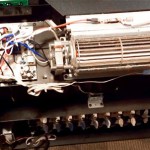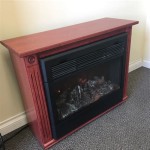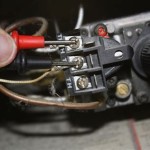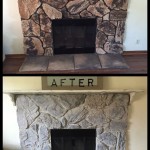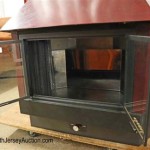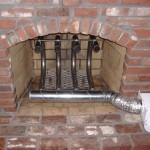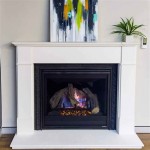EPA Certified Gas Fireplaces: Understanding Efficiency and Environmental Impact
Gas fireplaces have become increasingly popular as a convenient and aesthetically pleasing heating alternative. However, concerns about emissions and energy efficiency have led to the development and adoption of stricter regulatory standards. The Environmental Protection Agency (EPA) plays a crucial role in establishing these standards and certifying gas fireplaces that meet specific performance criteria. Understanding the EPA certification process and its implications is vital for consumers considering purchasing or upgrading a gas fireplace.
An EPA certified gas fireplace signifies that the appliance has undergone rigorous testing and meets specific emissions standards for particulate matter (PM). Particulate matter, specifically PM2.5, poses a significant health risk as it can penetrate deep into the lungs and contribute to respiratory and cardiovascular problems. The EPA’s certification program is designed to reduce these harmful emissions from residential heating appliances, contributing to improved air quality and public health.
The certification process involves subjecting gas fireplaces to standardized testing protocols conducted by accredited laboratories. These tests measure the amount of particulate matter released during operation under various conditions. To receive EPA certification, a gas fireplace must demonstrate compliance with the established emission limits, which have been progressively tightened over time to encourage manufacturers to develop cleaner and more efficient technologies.
The EPA's emission standards for gas fireplaces primarily target particulate matter, but they also indirectly address other pollutants such as carbon monoxide (CO) and volatile organic compounds (VOCs). Efficient combustion processes, which are essential for minimizing particulate matter emissions, also tend to reduce the production of these other pollutants. Therefore, selecting an EPA certified gas fireplace contributes to a reduction in overall air pollution.
The EPA's role extends beyond simply setting standards. The agency also provides guidance and resources to manufacturers, retailers, and consumers to promote the adoption of cleaner and more efficient heating technologies. This includes educational materials, public awareness campaigns, and technical support to help ensure that gas fireplaces are installed and operated properly.
Key Point 1: The Significance of Particulate Matter Emission Standards
Particulate matter, generally classified as PM10 and PM2.5, refers to microscopic particles suspended in the air. PM2.5 is of particular concern due to its small size, which allows it to penetrate deeply into the respiratory system. Exposure to high concentrations of PM2.5 has been linked to a range of health problems, including asthma, bronchitis, heart disease, and premature mortality. The EPA's particulate matter emission standards for gas fireplaces are designed to minimize the release of these harmful particles into the atmosphere.
The EPA's emission limits for gas fireplaces are typically expressed in terms of grams of particulate matter emitted per megajoule (g/MJ) of heat output. These limits have been progressively tightened over the years to reflect advancements in combustion technology. By setting stringent emission standards, the EPA incentivizes manufacturers to develop and implement cleaner burning gas fireplace designs.
The impact of these emission standards extends beyond individual households. Widespread adoption of EPA certified gas fireplaces can contribute to significant improvements in air quality at the community and regional levels. Reducing particulate matter emissions can lead to lower rates of respiratory illness, improved visibility, and reduced damage to ecosystems.
Furthermore, the EPA's emission standards encourage innovation in the gas fireplace industry. Manufacturers are constantly striving to develop new technologies that can further reduce particulate matter emissions and improve overall energy efficiency. This ongoing effort drives progress towards cleaner and more sustainable heating solutions.
The EPA’s regulations also address the testing methodologies used to evaluate particulate matter emissions from gas fireplaces. Standardized testing protocols ensure that all fireplaces are evaluated on a level playing field, providing consumers with reliable information to compare the performance of different models. These protocols specify the operating conditions under which the tests are conducted, including fuel type, air supply, and flue configuration.
Key Point 2: Energy Efficiency and Cost Savings
While the primary focus of EPA certification is on emissions, many EPA certified gas fireplaces also offer significant improvements in energy efficiency. Efficient combustion not only reduces particulate matter emissions but also maximizes the amount of heat generated from a given amount of fuel. This translates into lower energy bills for homeowners and reduced consumption of natural gas or propane.
Energy efficiency is typically measured in terms of Annual Fuel Utilization Efficiency (AFUE), which represents the percentage of fuel energy that is converted into usable heat. A higher AFUE rating indicates a more efficient fireplace. EPA certified gas fireplaces often have higher AFUE ratings compared to older, non-certified models.
The cost savings associated with energy-efficient gas fireplaces can be substantial over the lifespan of the appliance. In addition to lower fuel bills, energy-efficient fireplaces may also qualify for rebates or tax credits offered by government agencies or utility companies. These incentives can further reduce the upfront cost of purchasing a new fireplace.
Moreover, energy-efficient gas fireplaces can contribute to a reduction in greenhouse gas emissions. By consuming less fuel, these appliances reduce the amount of carbon dioxide (CO2) released into the atmosphere, helping to mitigate climate change. This makes EPA certified gas fireplaces a more environmentally responsible choice for heating than less efficient alternatives.
Beyond the financial and environmental benefits, energy-efficient gas fireplaces can also provide more consistent and comfortable heating. These appliances are often equipped with advanced controls that allow homeowners to precisely regulate the temperature in their homes. This can lead to a more even distribution of heat and a more comfortable living environment.
Key Point 3: Factors to Consider When Choosing an EPA Certified Gas Fireplace
When selecting an EPA certified gas fireplace, consumers should consider several factors to ensure they choose a model that meets their specific needs and preferences. These factors include the size and style of the fireplace, the heating capacity, the fuel type (natural gas or propane), and the available features.
The size and style of the fireplace should be chosen to complement the existing décor of the home. Gas fireplaces are available in a wide range of styles, from traditional to contemporary, and can be installed in various locations, including living rooms, bedrooms, and basements. It is important to select a fireplace that fits the available space and enhances the overall aesthetic appeal of the room.
The heating capacity of the fireplace should be appropriate for the size of the area to be heated. Over-sizing the fireplace can lead to excessive heat and wasted energy, while under-sizing it may not provide adequate heating. Consult with a qualified HVAC professional to determine the appropriate heating capacity for your specific needs.
The fuel type (natural gas or propane) will depend on the availability of these fuels in your area. Natural gas is typically less expensive than propane, but propane may be a more suitable option for homes that are not connected to a natural gas pipeline. Both natural gas and propane fireplaces are available with EPA certification.
Consider the additional features offered by different gas fireplace models. Some fireplaces come equipped with features such as remote controls, programmable thermostats, and variable flame height settings. These features can enhance the convenience and comfort of using the fireplace.
Finally, it is crucial to ensure that the gas fireplace is installed by a qualified professional. Proper installation is essential for ensuring the safe and efficient operation of the appliance. A qualified installer will be familiar with local building codes and regulations and will ensure that the fireplace is properly vented and connected to the fuel supply.
Consumers can verify EPA certification by looking for the EPA label on the fireplace or by consulting the EPA's list of certified appliances. This information provides assurance that the appliance meets the required emissions standards and will contribute to cleaner air and a healthier environment.
The long-term benefits of opting for an EPA-certified gas fireplace extend beyond individual households, contributing to broader environmental goals. By choosing these appliances, consumers actively participate in reducing pollution and promoting sustainable heating practices.

Superior White Stacked Epa Certified Wood Fireplace Wct6940 North Country Fire

Fireplaces Gas Superior Epa Certified Wood Burning Front Open Circulating Wct6920

Superior White Stacked Cf Trad Epa Cert Wood Fireplace Wrt3920 North Country Fire

Epa Iii Certified Wood Burning Superior Signature Series Fireplace Wct6940

Wood Burning Epa Certified Fireplace With Powerful Catalytic Heating By Superior Wrt4826

Superior Epa Certified 20 Inch Wood Burning Fireplace Wrt3920 B

Fireplaces And Gas Inserts Fireplace West Grand Junction

Superior High Efficiency Epa Certified Wood Burning Fireplace Wrt3920

Superior Wrt3920 Wood Burning Fireplace Woodland Direct

Love Burning Wood In Your Fireplace Or Stove Make Sure It S Epa Certified Forshaw Of St Louis

